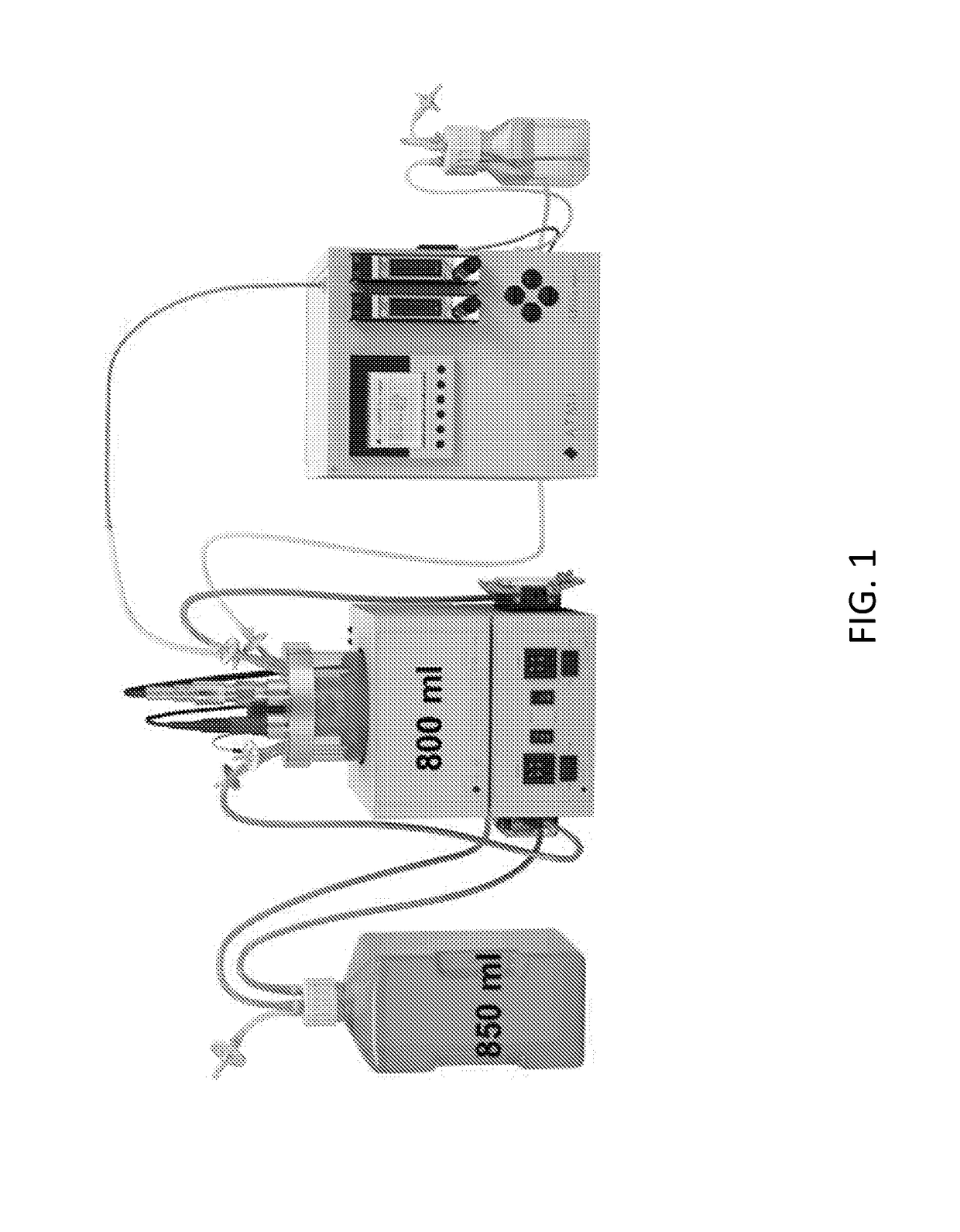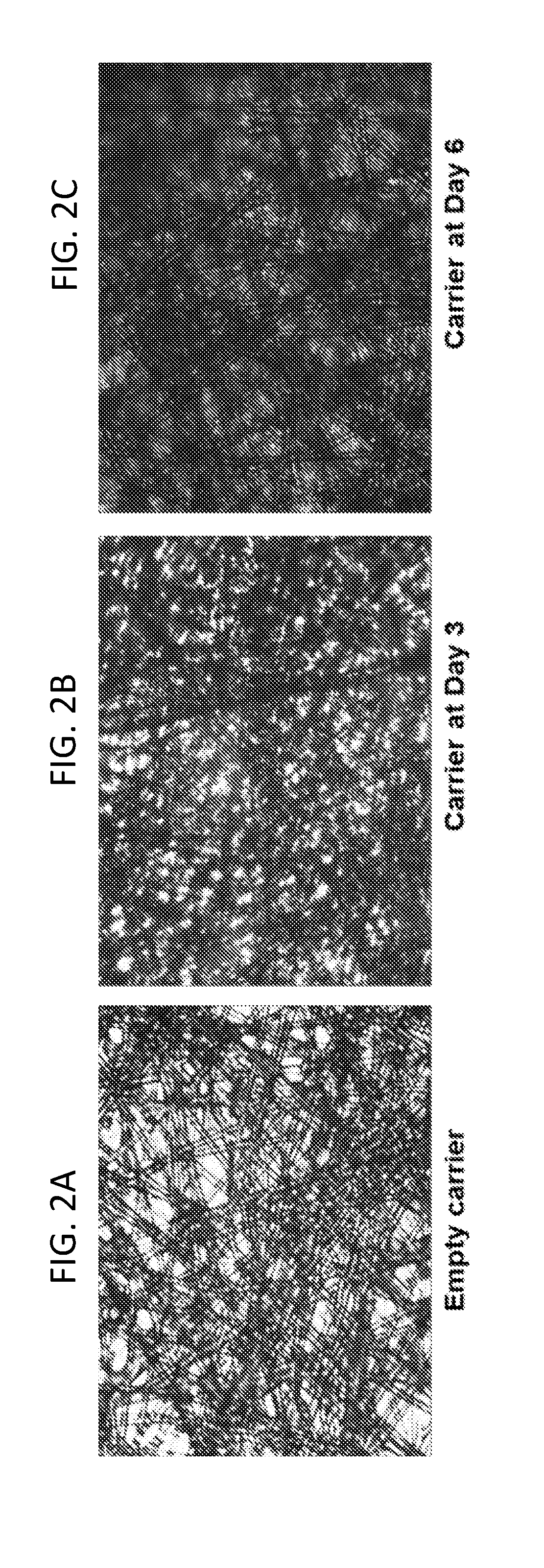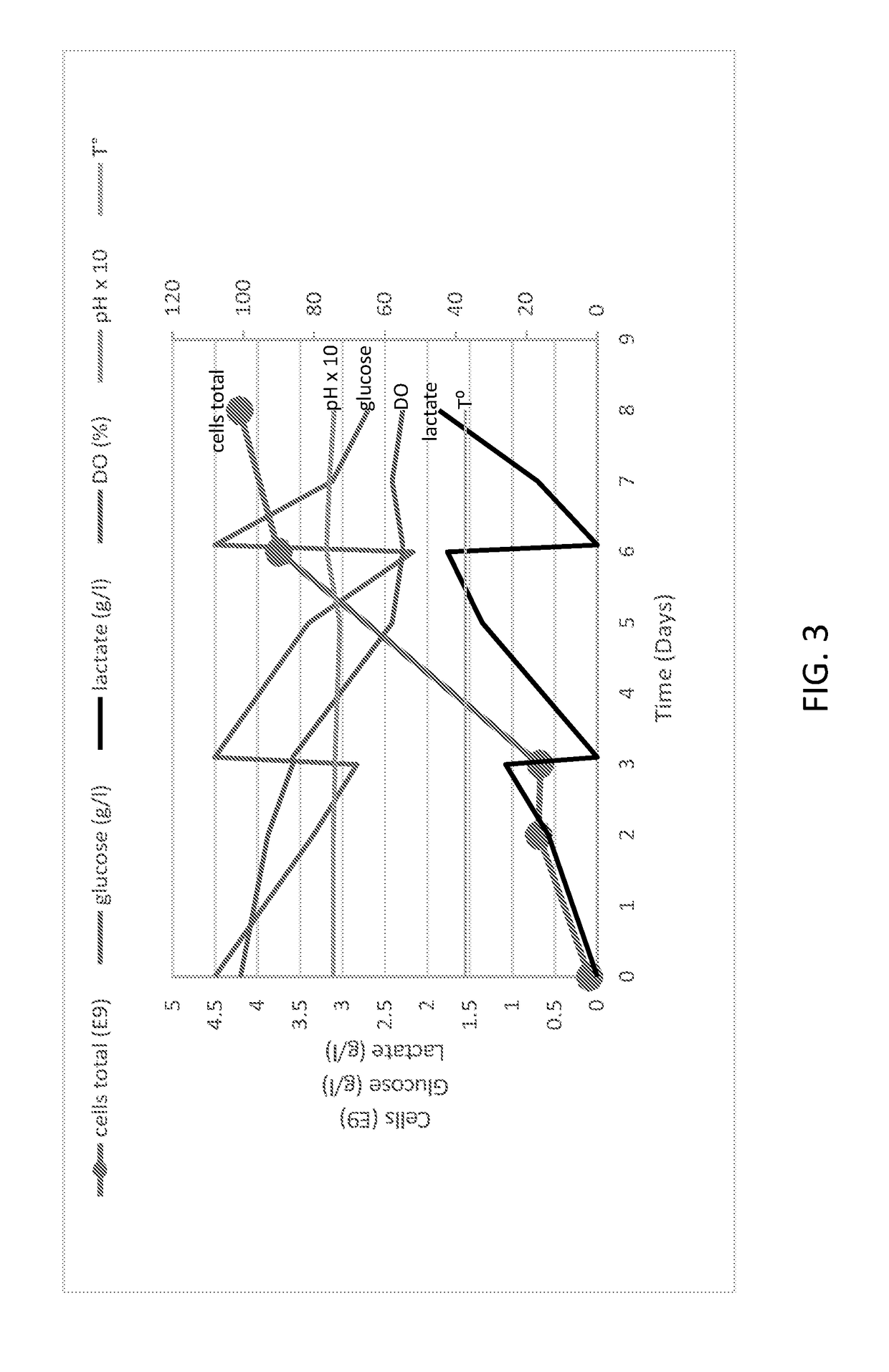Methods for producing virus for vaccine production
- Summary
- Abstract
- Description
- Claims
- Application Information
AI Technical Summary
Benefits of technology
Problems solved by technology
Method used
Image
Examples
example 1
th Evaluation in iCELLis NANO
[0257]Vero cell line growth in the iCELLis NANO bio-reactor was evaluated.
[0258]Methods
[0259]For the iCELLis NANO, cells were counted using the nucleus count method, whereas for the Cell-Stacks, cells were counted using the Trypan blue method.
Glucose / Lactate Measurement
[0260]Lactate was measured using a Scout™ lactometer. Glucose was measured using an ACCU-CHEK Aviva Plus system.
Vero Resuscitation
[0261]Vero cell resuscitation was performed. A 1-ml vial of Vero cells was quickly thawed (less than 3 minutes), wiped with IsaSept, and mixed with 19 mL of pre-warmed DMEM D1145 supplemented with 10% FBS and 2 mM glutamine, in a T-75 flask. An aliquot (0.4 ml) was taken for cell count and viability and the T-75 flask was placed at 37° C. in a CO2 (5%) incubator. The next day, the spent medium was discarded and replaced with fresh medium (20 ml) and the culture was continued.
Culture and Passage in T-175 Flasks
[0262]Vero cell culture and ...
example 6
f Experimental Parameters
[0308]A summary of key parameters from Experiments 1-5, performed in iCELLis NANO and Cell Stacks, are shown in Tables 12 and 13 below.
TABLE 12Summary of key parameters of experiments performed in iCELLis NANO.NANOTotal mediaTotal mediaCell densityCell densityfixed bedNANOvol. used forvol. used forat inoculationat infectionNANOvolumesurfacecell growthinfectionExperiment(E6 / cm2)(E6 / cm2)MOIcompaction(mL)(m2)(mL)(mL)Exp. 10.015——1X400.534,950—Exp. 20.0150.520.0241X400.533,3003,300Exp. 30.0150.250.024 1.5X400.82,4802,480Exp. 40.0150.550.0021X400.533,3003,300Exp. 50.0150.220.020 1.5X400.82,4802,480
TABLE 13Summary of key parameters of control experiments performed in Cell Stack.Estimate ofCellTotal mediaTotal mediaCell densityCell densityCell StackStackvol. used forvol. used forat inoculationat infection(number ofsurfacecell growthinfectionExperiment(E6 / cm2)(E6 / cm2)MOIplateau)(m2)(mL)(mL)Exp. 10.015——100.632,000—Exp. 20.015~0.250.024100.632,0002,000Exp. 30.015~0.2...
example 7
ion Study: Impact of Decreasing EV71 MOI in iCELLis NANO Cultures by 20-Fold
[0309]The impact of reducing the EV71 MOI in iCELLis NANO cultures by 20-fold, from 0.02 down to 0.001, was evaluated. Reducing the MOI lowers the volume and costs of the corresponding virus seed bank.
[0310]Methods
[0311]To evaluate the impact of a 20-fold decrease of cell density at inoculation, two iCELLis NANO cultures were performed and infected at densities of either 0.25 or 0.5×10E6 cells / cm2 using an MOI of 0.001. These cultures were then compared to iCELLis NANO cultures performed under similar conditions but infected with a MOI of 0.02. The viral productivity was evaluated using the TCID50 method.
[0312]Results
[0313]TCID50 results are presented in Table 14. At the low cell density of 0.25×10E6 cells / cm2, a high MOI resulted in a 5-fold higher productivity. At the cell density of 0.5×10E6 cells / cm2, no significant difference between low and high MOI was observed. In addition, experiments performed in C...
PUM
| Property | Measurement | Unit |
|---|---|---|
| Length | aaaaa | aaaaa |
| Fraction | aaaaa | aaaaa |
| Fraction | aaaaa | aaaaa |
Abstract
Description
Claims
Application Information
 Login to View More
Login to View More - R&D
- Intellectual Property
- Life Sciences
- Materials
- Tech Scout
- Unparalleled Data Quality
- Higher Quality Content
- 60% Fewer Hallucinations
Browse by: Latest US Patents, China's latest patents, Technical Efficacy Thesaurus, Application Domain, Technology Topic, Popular Technical Reports.
© 2025 PatSnap. All rights reserved.Legal|Privacy policy|Modern Slavery Act Transparency Statement|Sitemap|About US| Contact US: help@patsnap.com



